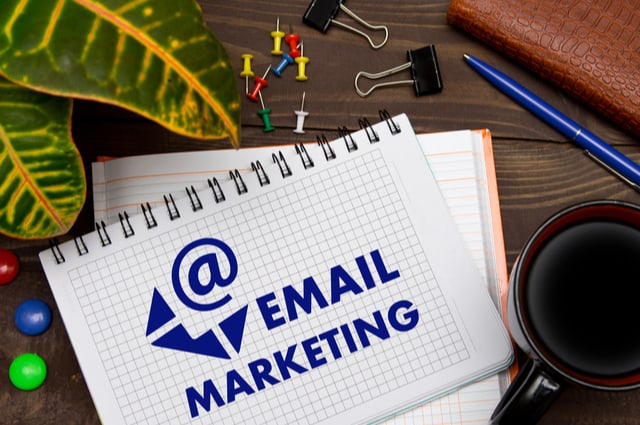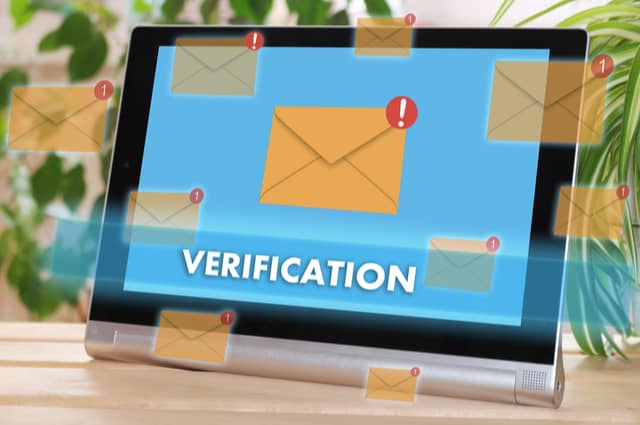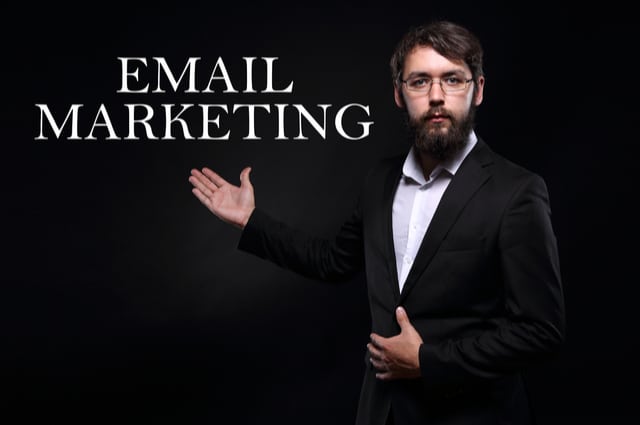Business Newsletter: When is the Best Time to Send Email to your subscribers?
When is the Best Time to Send Email?
As per the marketing strategists, the ideal day to send a newsletter is at the start of the month. Your customers are more inclined to open and read your email because you aren’t competing with other businesses who send out newsletters during the same week.

It is recommended to offer an incentive in the email’s body if you want to make sure that your subscribers read your newsletter or if you want to boost click-through rates.
For instance, if you have a product sale and are sending out a weekly newsletter to your email subscribers, you may include a discount code that recipients can use to save money.
The Importance of an Effective Business Newsletter

A company business newsletter is a fantastic method to keep your customers and potential customers informed about the most recent news, events, and occurrences in your sector. It’s a fantastic chance for you to update current clients about new goods, services, deals, and other things.
But if you don’t have a solid email marketing plan, it could really hurt your company. You should expand your email marketing efforts and publish a company newsletter for the following reasons.
1. Remain Current with Your Clients
People like to be informed when significant events occur in their life. You can inform your clients of significant developments and announcements with a company newsletter.
You could, for instance, promote a special deal or event that you want people to come to. Additionally, you could want to inform them of a new service or item you think they’ll enjoy.
2. Boost Sales
A company newsletter can be just what you need if you want to boost sales.
You can take use of this opportunity to showcase new products, advertise your best-selling items, and give devoted clients discounts.
This not only helps bring visitors back to your website, but it also helps you establish trust with your audience.
3. Promote Loyalty
Building customer relationships is among the secrets to being successful when it comes to online selling, and this can go a long way in that direction.
Sending out a corporate newsletter should be seriously considered if you want to increase consumer loyalty. By doing this, you may show your customers that you value and comprehend their needs.
4. Boost Participation
People are more likely to stay interested in brands they adore when they receive regular emails from such businesses.
In fact, 62% of customers say they read a brand’s content at least once a month, and 48% say they check a brand’s social media profiles at least once a week, as per research by The Content Marketing Institute.
Make sure to occasionally send out your newsletter if you want to increase interaction.
5. Increase brand recognition
A company newsletter also allows you the ability to promote your brand, which is another benefit.
People will start to identify your name with high-quality content after they notice that you consistently create engaging articles and blog entries. They’ll start anticipating getting your newsletter every month as a result.
6. Increase Traffic
An additional advantage of a company newsletter is that it boosts traffic. After reading your newsletter, subscribers are likely to go to your website. This suggests that you’ll get more visits than you would have otherwise.
7. Boost Search Engine Optimization
Search engine optimization should be a part of every company’s marketing strategy. Making high-quality content for your website is one strategy to raise your search rankings.
To accomplish this successfully, you must, however, keep your readers informed on the most recent news and information.
A company newsletter can be useful in this situation. Thanks to it, you may spread the word about all the wonderful things that have happened recently.
Your readers will appreciate reading about these occasions, and as a result, they’ll visit your website more regularly. Your next postal marketing campaign will be a success if you create an engaging newsletter that is opened, read, and motivates readers to act.
Recognize Your Audience Using Demographics

The most important thing you can do to improve the effectiveness of your email marketing is to analyse your demographics.
You must be cognizant of and appropriately accommodate their tendencies. While older people are more likely to check their email after work, younger people are more likely to be online all day.
The fact that Fridays are associated with labour causes them to be regularly mocked. However, there are a number of ways to get in touch with people who might be curious about your business or products.
Online time is higher among residents of colder regions than of warmer ones. These people can be contacted through email marketing campaigns.
You want to customise emails based on where your recipients live, so don’t forget to take their time zone into account.
Suggestions on How to Schedule Emails for Your Audience
Data collection is required for email marketers in order to identify their target market. They ought to be aware of the times of day or weeks when they are online the most. Because too many emails may annoy recipients or make them feel like they’ve wasted their time.
The digital marketing team should examine the open rates. Open rates are important because a low response rate suggests that your audience isn’t paying attention to what you have to say.
- Look at the email marketing strategies used by your competitors.
- Observe the time at which they send emails. There could be a reason for this.
- They could have researched your industry and target market.
- Think about basing your schedule on theirs.
All marketing strategies must include A/B testing. Recognize that the issue has not been fixed. Set up your emails to be sent at various intervals throughout the day. Compare the outcomes to determine what is most effective.
Validation of Email
Verifying the email addresses on your list is another crucial step before sending emails. Your email deliverability may be impacted if you purchased the emails or acquired the email addresses without confirming them.
You can validate the email addresses quite easily by using an email validation tool like the TuxMailer.
When is the best time to send email campaigns?

While assessing your target audience might help you get better results, case studies can also be used to show how other firms operate and determine whether your own is successful.
Sending emails at times when recipients would be most likely to view them is recommended. For instance, you might want to concentrate on online shoppers if you offer garments.
If you’re selling property, you might email people when they’re at work throughout the day. Baby toy manufacturers can send out email messages on Tuesdays at 9 a.m. because the majority of consumers use computers in the morning.
Career coaches can send emails on Mondays at 9:00 p.m. because most people use computers in the evening.
Timing is everything in newsletters. As close to the day as you can, send them out. If you want it to be sent out on Thursday, for instance. Make sure to submit the email no later than Wednesday or Thursday.
People will be able to read it prior to the weekend!
Consistency is essential.
It’s critical to be consistent. A daily newsletter can be created in less than a few hours, and a weekly email can be created in less than a few days.
It takes consistency to build and maintain your brand. You must be confident that you will fulfil whatever commitments you make. If you don’t fulfil your promises, your audience will stop believing in you.
Inconsistency will also cause customers to depart. You must ensure that the environment surrounding your product remains constant.
All platforms should carry the same branding. This includes your website’s layout and wording, as well as blog posts and social media updates.
Deciding on a frequency
Weekly emails are great if you can load them with enough worthwhile content. With a monthly newsletter, you can be thorough. You have the choice to add more content as well as links.
Every week, your newsletter will be anxiously anticipated by your audience. An ideal cycle for a novice email marketer is one month long. It promotes experimentation and failure while also requiring action (deadlines!)
Be responsive and act
The goals of the newsletter could change over time, so you’ll need to be adaptable in changing the email’s format and content to match their needs.
Do little tests without hesitation, and be receptive to criticism, recommendations, and feedback. In fact, directly solicit reader feedback. What do they find appealing or repulsive?
Keep a record of it!
Be flexible with the information in your emails and blog posts! It’s easy to consider your website “your baby” and to take any criticism out of context.
To assist you in overcoming this natural rejection, ask for feedback from others. Every business must schedule its emails.
You need to know when to email clients and potential clients. There is going to be some experimentation necessary to get things right.
These typical communications are accepted by the email marketing community, who also offer scheduling recommendations.
Although they’re great for getting things going, keep reading to learn why they don’t always succeed.
Weekends
Weekends are utilised for adventures and running errands. Weekend open rates are traditionally low, therefore the majority of marketers treat them like the flu.
Midday and MidWeek:
The tried-and-true strategy of delivering email campaigns during the week and during the day is effective. According to common belief, email newsletters must be sent between the hours of 1:00 and 5:00 p.m. (9–11am is recommended as well).
- It carries no risk.
- It is trustworthy.
- It isn’t a bad choice.
Remember the saying “nothing ventured, nothing gained” always. MailChimp advises sending emails at 2 p.m. based on research.
Day versus Night
Despite the fact that it can seem obvious, it is usually advisable to send email campaigns during the day, when they are awake.
The worst days are Mondays
It’s traditional not to send out email blasts on Mondays. Why? Already, people are sad that the weekend has ended.
They enter the office and are immediately welcomed with a flood of emails from the prior several days. What action do they take first?
Delete those emails, of course!
Best Days are Tuesdays, Wednesdays, and Thursdays.
By distributing email messages on Tuesday, Wednesday, and Thursday, email marketers have historically avoided the pain of Monday and the itchiness of Friday.
According to Marketing Statistics, individuals prefer sending email newsletters on Tuesday and Thursday.
Getting ahead of the Rush

So it appears that everyone believes that the ideal days to start an email campaign are Tuesday, Wednesday, and Thursday. They have probably also heard this sensible advice, unless they are somewhere north of Winterfell.
This means that if you send emails on the “recommended” days and hours, you’ll have a lot of competition.
If you don’t want your email to be lost in the flow, swimming upstream might be the wisest course of action. Who says you can’t get things done on Mondays and Fridays?
It depends on the tool being utilised.
Traditional “best time to send email” estimations are losing relevance as user behaviour varies across devices.
The typical mid-week, mid-day time period makes perfect sense for PC users who read their emails at work.
On the contrary hand, mobile device users routinely utilise them, even in the late hours of the night.
A Brafton poll indicated that while mobile device usage is highest at night and on weekends, only 25% of customers actually access emails on their mobile devices. Instead, 55% of customers check their emails on PCs. Although this poll was done in 2013, as people’s reliance on mobile devices increases, these numbers could swiftly change.
Email open rates on mobile devices will rise as firms learn to write more mobile-friendly emails.
Not getting the required open rates? Avoid critiquing the time.
Your subject lines are another factor that contributes to poor open rates in addition to your sending times. Your email subject lines are very important. Ensure that the email subject line is captivating and intriguing.
Is it possible that sending too many emails is what’s causing your low open rate? May, be!
Are you sending out excessive numbers of emails? Remember that everyone dislikes a chatterbox. Your subscribers might find your messages bothersome, if you are sending too many.
Do you have a mobile-friendly message? Do you have any recommendations about how to make your emails more mobile-friendly? What “works” for you and “doesn’t work”?
Email Campaigns Can Be Sent With Confidence
The best way to increase email openings is not a one-size-fits-all approach.
It is your responsibility as an email marketer to conduct research, test different dates and times, email service providers, and come to your own conclusions about what works and what doesn’t.
Conclusion – Best Time to Send Email Campaigns
There is no best time to send emails. It all depends on your audience. What a ridiculous justification! But it’s accurate.
Sometimes the working hours increase clicks and views, and other times it’s the catchy email subject lines.
While the broader email marketing business frequently supports particular days of the week and times, we’ve mentioned how straightforward it is to refute such claims.
You must TEST, though, if you really want to understand email marketing and know when to send your email newsletters to get the most open and clicks.
Try to A/B test your sending times as much as you can. The most successful technique to decide when to send your message to your target audience is in this fashion.
Subscribe to our Newsletter
Sign up to receive email updates on new product announcements, exclusive sales and marketing content, special offers on email validation plans, and more.
We send curated content as per your preference and do not indulge in spam!
What would you like to know about
We’re committed to your privacy. TuxMailer uses the information you provide to us to contact you about our relevant content, products, and services. You may unsubscribe from these communications at any time. For more information, check out our privacy policy.



